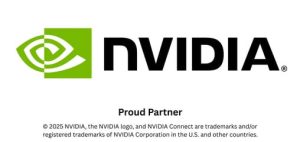In the rush to integrate AI into our businesses, we oftentimes overlook a critical question: How secure is our AI infrastructure? While AI offers transformative capabilities, it also introduces new vulnerabilities that can be exploited if not properly managed.
The New Frontier of AI-Driven Threats
AI systems, especially those with autonomous capabilities, are becoming integral to business operations. However, without stringent security measures, these systems can become liabilities. For instance, autonomous AI agents, if not properly managed, can inadvertently cause data breaches or misuse access credentials. Axios
Moreover, the rise of “shadow AI” – unauthorised AI tools used by employees – poses significant risks. These tools often operate without proper oversight, leading to potential data leaks and compliance violations. wiz.io

Case Study: The Snowflake Data Breach
In 2024, Snowflake, a prominent cloud data warehousing company, experienced a significant data breach. Hackers accessed customer information, raising concerns about cloud security and the vulnerabilities of interconnected systems. Cyble
This incident underscores the importance of securing AI systems, especially those that rely on third-party integrations.
Understanding the Risks

AI systems are susceptible to various threats, including:
Prompt Injection Attacks: Manipulating AI responses through crafted inputs. Wikipedia
Data Poisoning: Introducing malicious data to corrupt AI models.
Model Inversion: Extracting sensitive information from AI models.
These threats highlight the need for robust security measures tailored to AI systems .
Best Practices for Securing Your AI Stack
Implement Robust Access Controls: Ensure that only authorised personnel can access AI systems.
Regularly Audit AI Models: Monitor AI behaviour to detect anomalies or unintended outputs. SentinelOne
Encrypt Data: Protect data at rest and in transit using strong encryption protocols.
Educate Employees: Train staff on the risks associated with unauthorised AI tools and the importance of compliance. wiz.io
Collaborate with Security Experts: Engage cybersecurity professionals to assess and enhance AI security measures.
Final Thought
As AI continues to permeate various aspects of business, ensuring the security of AI systems becomes paramount. By understanding the risks and implementing best practices, organisations can harness the power of AI while safeguarding their data and maintaining compliance.
Victor A. Lausas
Chief Executive Officer





